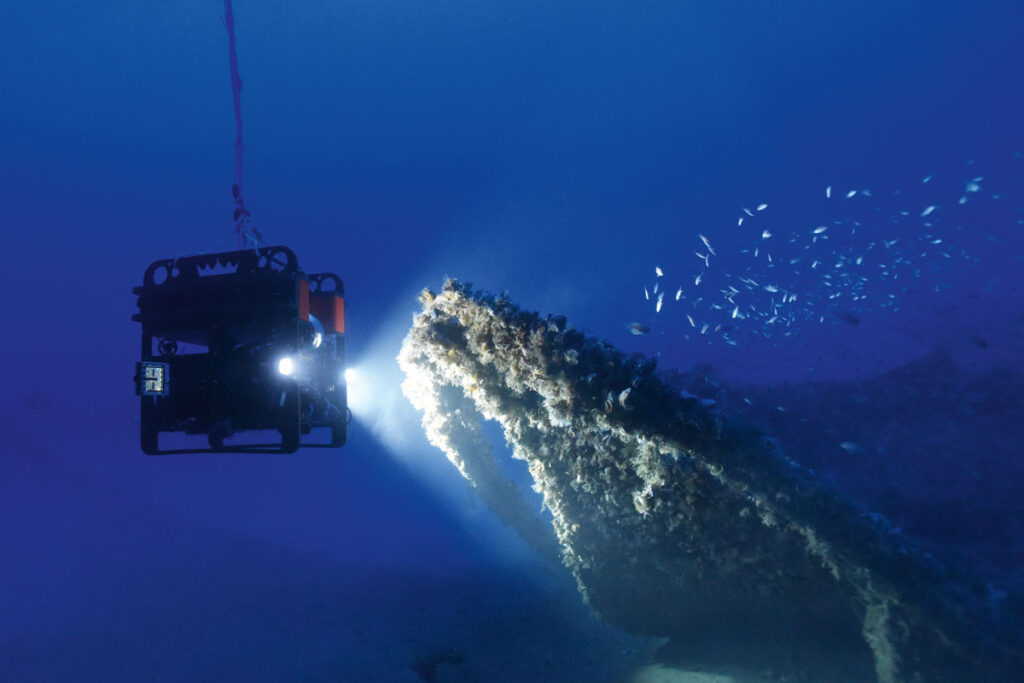[LUM#18] 2,000 years under the sea
Because he loved the sea and robots, Vincent Creuze chose underwater robotics. Together with Arthur, he designed the world's first robot dedicated to archaeology, capable of descending to a depth of 2,500 meters to bring up 2,000 years of history. A portrait of a researcher based at LIRMM, navigating the world of innovation and archaeology.

Everything takes place far, far away in the depths of the sea, where the wrecks of ancient storms lie in total darkness. A small cubic mass floats with the lightness of a butterfly over treasures hidden from view for two millennia. Arthur, as he is called, is the first robot designed entirely for archaeological exploration. Capable of descending to a depth of 2,500 meters, he searches, maps, films, samples...
In the moonlight
To find its designer, let's follow the cable that connects it to the Alfred Merlin, the ship belonging to the Department of Underwater and Underwater Archaeological Research ( DRASM). On the deck, with only the moon lighting up the waves and dolphins and squid gliding silently around the boat, Vincent Creuze, a robotics researcher at the Montpellier Laboratory of Computer Science, Robotics and Microelectronics (LIRMM*), is putting the finishing touches to Arthur's settings. Everything will be ready when the archaeologists wake up in August 2022 to take part in the UNESCO campaign to explore ancient ships that ran aground in the Strait of Sicily.
They have been working on this robot for nine years with Olivier Templier, an engineer at Lirmm. Ever since Drassm set them the crazy challenge of designing, within ten years, a robot capable of diving to a depth of 2,000 meters to investigate, with the delicacy of an archaeologist, the 200,000 or so shipwrecks that lie at the bottom of French territorial waters. "Together, we design everything, from the robot to the software and electronic cards. Once at sea, I have to be able to control and repair everything, " explains Vincent Creuze.
A moment suspended in time
His first archaeological robot was created in 2014. Speedy, a 75 cm by 40 cm machine, was equipped with a claw specially designed to grasp and retrieve samples. "When the archaeologists saw it, they were skeptical. They had imagined a larger robot with an articulated arm, but when they saw it working, we won their trust." Lightweight, easy to operate, fast, and delicate, this prototype was a success, but it was stolen in the port of Marseille a few weeks later. "I was desperate," recalls the researcher, "but fortunately, I had managed to finance a second prototype."
Other robots will follow: Leonard, Flipper, Basile, and finally Arthur, his very own Nautilus. The first capable of descending not to 2,000 meters but to 2,500 meters, "and in nine years instead of ten," jokes the man whose work has been recognized with the University of Montpellier's innovation award. As he completed mission after mission, becoming a regular on the Alfred Merlin, the researcher marveled at the cargoes of amphorae, finely carved glass bottles, and even stone columns intended for temples that their gods must still be waiting for. Vincent Creuze is no longer waiting; he is savoring the moment: "Being at the helm of Arthur is like being yourself at the bottom; it's a moment suspended in time, an incredible emotion."
Listen to Vincent Creuze on the podcast La science s’aMuse (Science Fun) from September 30, 2020.
*Lirmm (UM, CNRS, Inria, UPVD, UPVM)
Find UM podcasts now available on your favorite platform (Spotify, Deezer, Apple Podcasts, Amazon Music, etc.).